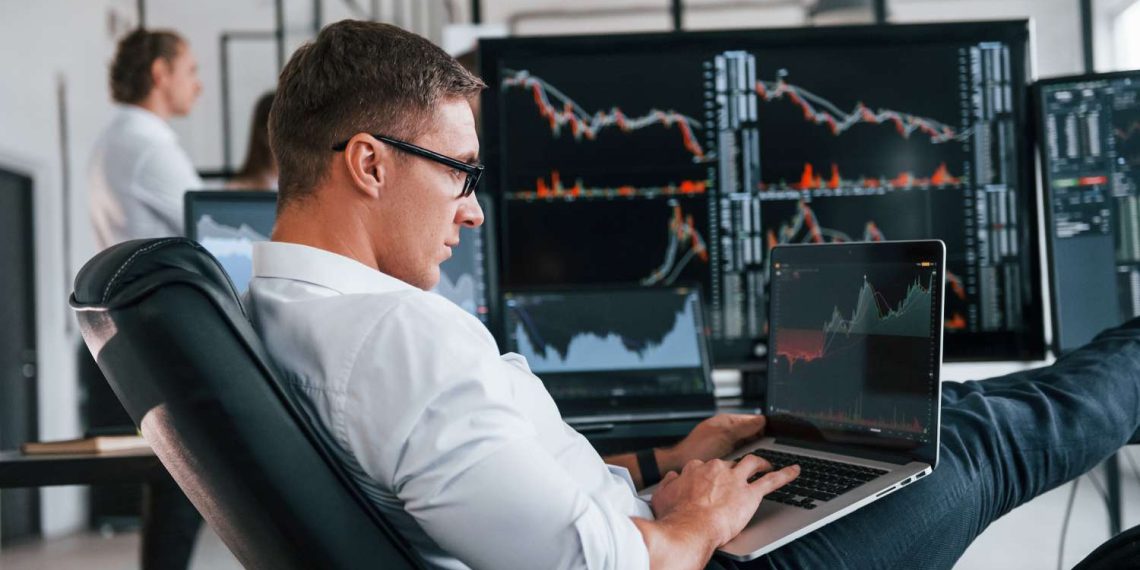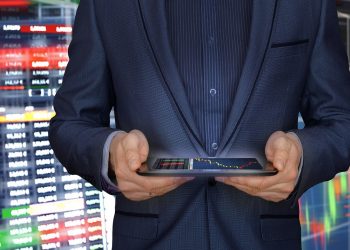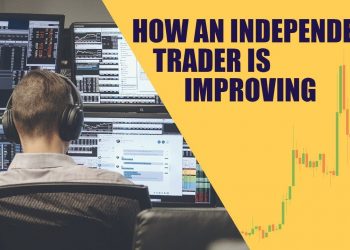Trading plays a vital role in shaping the modern economy. From bustling stock exchanges in New York to digital currency markets accessible from smartphones, traders are the driving force that keeps the global financial ecosystem dynamic, liquid, and efficient. Understanding who traders are, how they operate, and what differentiates successful traders from average ones is essential for anyone interested in finance, economics, or investment strategy.
What is a Trader?
A trader is an individual or institution that buys and sells financial instruments such as stocks, bonds, commodities, currencies, derivatives, or digital assets. The primary goal of trading is to generate profit from market price movements. Unlike long-term investors, traders seek to capitalize on short- to medium-term opportunities, often executing multiple transactions within a day, week, or month.
Trading can take many forms, and each type requires distinct strategies, risk management practices, and analytical skills. Whether it’s a Wall Street professional managing millions in capital or an independent day trader operating from a home office, traders share one common objective — identifying opportunities for profit within market inefficiencies.
The Core Types of Traders
1. Day Traders
Day traders open and close positions within the same trading day. They rely heavily on technical analysis, chart patterns, and short-term indicators to make quick decisions. Since positions are not held overnight, they avoid risks associated with after-hours news or market gaps. However, day trading requires intense focus, discipline, and access to fast data execution systems.
2. Swing Traders
Swing traders aim to capture price swings that occur over several days or weeks. This trading style combines both technical and fundamental analysis. Swing traders often use chart trends, volume data, and earnings reports to identify short- to medium-term opportunities. It’s less intense than day trading but still requires vigilance and market awareness.
3. Position Traders
Position traders take a longer-term approach, holding positions for weeks, months, or even years. Their decisions are often influenced by macroeconomic trends, interest rate policies, or geopolitical developments. This approach resembles investing but with a stronger emphasis on timing and market entry/exit points.
4. Algorithmic Traders
Also known as quantitative traders, algorithmic traders use computer programs to execute trades automatically based on predefined criteria. Algorithms can analyze vast datasets and execute trades faster than humans, allowing for sophisticated strategies like statistical arbitrage and high-frequency trading (HFT).
5. Institutional Traders
Institutional traders work for large organizations such as banks, hedge funds, and asset management firms. They trade on behalf of clients or the firm’s portfolio. Their trades often influence market movements due to the size of their positions, and they have access to advanced technology and analytics that retail traders may not.
6. Retail Traders
Retail traders are individuals who trade for personal gain rather than on behalf of institutions. Advances in technology have democratized trading, enabling anyone with internet access to participate in the markets. Retail traders now make up a significant portion of global trading volume, especially in forex and cryptocurrency markets.
The Psychology of Trading
Trading is not merely about charts and numbers — it’s deeply psychological. Emotional control separates successful traders from those who fail. Greed, fear, and overconfidence often lead to poor decision-making and heavy losses.
Key psychological factors include:
- Discipline: Sticking to a plan, even when the market behaves unpredictably.
- Patience: Waiting for high-probability setups rather than chasing every price movement.
- Emotional detachment: Accepting losses as part of the process without letting emotions influence the next trade.
- Adaptability: Adjusting strategies when markets evolve or trends shift.
The ability to manage these emotions consistently is what makes trading as much an art as it is a science.
Fundamental vs. Technical Trading Approaches
Traders typically rely on two core analysis frameworks: fundamental analysis and technical analysis.
Fundamental Analysis
This approach involves evaluating the intrinsic value of a financial instrument. Traders consider economic indicators, company earnings, interest rates, and geopolitical events to predict price movements. For example, a fundamental trader might buy a stock if the company’s quarterly results exceed expectations or sell if global inflation data hints at tighter monetary policy.
Technical Analysis
Technical analysis focuses on price patterns, volume, and historical trends. Traders use charts, moving averages, Fibonacci retracements, and momentum indicators to predict future movements. Unlike fundamental analysis, technical analysis assumes that all known information is already priced in, and price patterns tend to repeat over time.
Risk Management: The Cornerstone of Trading Success
Every trader understands that markets can be unpredictable. Effective risk management ensures survival during adverse market conditions. No trading strategy is complete without a clear plan to control losses and protect capital.
Essential Risk Management Practices:
- Stop-loss orders: Automatically close trades when a predefined loss level is reached.
- Position sizing: Never risk more than a fixed percentage (commonly 1–2%) of trading capital per trade.
- Diversification: Spread exposure across different instruments to reduce risk.
- Maintaining a risk-to-reward ratio: Aim for setups where potential gains outweigh possible losses.
By mastering these practices, traders protect themselves from catastrophic losses and ensure consistency in the long run.
The Role of Technology in Modern Trading
Technology has revolutionized trading. Gone are the days when traders relied solely on ticker tapes and phone calls. Today, trading platforms provide real-time market data, AI-powered analysis, and advanced automation tools.
Modern trading technologies include:
- AI-driven trading algorithms that adapt to market behavior.
- High-frequency trading (HFT) systems executing thousands of trades per second.
- Mobile trading apps offering flexibility and convenience.
- Blockchain-based platforms ensuring transparency and decentralization in digital asset trading.
The accessibility and sophistication of trading tools continue to evolve, making markets more competitive yet more inclusive.
Common Mistakes Traders Make
Even experienced traders can fall victim to avoidable errors. Recognizing these mistakes early is crucial to maintaining profitability.
Frequent trading pitfalls include:
- Overtrading: Taking too many trades without proper analysis.
- Ignoring risk management: Failing to set stop-loss or take-profit levels.
- Chasing losses: Increasing trade sizes to recover past losses.
- Lack of strategy: Entering trades without a well-defined plan.
- Neglecting journal keeping: Failing to review past trades and learn from mistakes.
Every professional trader keeps a trading journal to track progress, identify patterns, and refine strategies. Continuous self-assessment is an essential part of sustained success.
Economic Impact of Traders
Traders are more than just profit-seekers; they are crucial to the health of the global economy. By providing liquidity, traders make it easier for buyers and sellers to transact at fair prices. They also enhance price discovery, ensuring that asset prices reflect current supply, demand, and market sentiment.
Moreover, traders help allocate capital efficiently. Their activity signals where money should flow — toward promising companies, commodities, or currencies — promoting growth and innovation. Without traders, markets would be less efficient, less transparent, and less stable.
FAQs About Traders
1. What skills are most important for becoming a successful trader?
Successful traders need analytical thinking, discipline, emotional control, and adaptability. Technical proficiency with trading platforms and risk management skills are equally vital.
2. Is trading the same as investing?
No. Trading focuses on short- to medium-term profit opportunities, while investing aims for long-term wealth accumulation. Traders frequently enter and exit positions, whereas investors hold assets for years.
3. How much capital do I need to start trading?
There’s no fixed amount, but beginners should start small and focus on learning strategies before scaling up. Risking only what one can afford to lose is a golden rule.
4. Can AI and automation replace human traders?
Automation enhances efficiency but cannot fully replace human judgment. Markets are influenced by sentiment, news, and unexpected events that algorithms may not interpret correctly. A hybrid model combining AI tools with human oversight often works best.
5. How do traders manage stress in volatile markets?
Seasoned traders use mindfulness techniques, break routines, and avoid emotional decision-making. Maintaining a structured trading plan and avoiding impulsive reactions helps manage stress effectively.
6. Are traders responsible for market crashes?
While some trading behaviors like excessive speculation can contribute to volatility, traders are not solely responsible for crashes. Broader economic conditions, government policies, and systemic issues play larger roles.
7. What’s the future outlook for trading careers?
The demand for skilled traders continues to grow, especially in areas like algorithmic and crypto trading. As financial technology evolves, new opportunities are emerging for those with data analysis and AI integration expertise.
Trading is not merely about predicting market movements; it’s a disciplined pursuit of knowledge, strategy, and adaptability. Whether through technology, data, or human intuition, traders remain the beating heart of financial markets, shaping economies and influencing the world’s flow of capital with every transaction.

















